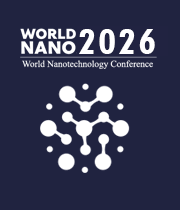2D Quantum Materials
Two-dimensional (2D) quantum materials represent a fascinating frontier in the realm of condensed matter physics, offering a unique playground for scientists to explore exotic quantum phenomena. These materials, often composed of a single layer of atoms arranged in a specific crystal lattice, exhibit extraordinary electronic and optical properties that can be vastly different from their bulk counterparts. Graphene, a single layer of carbon atoms arranged in a hexagonal lattice, serves as a prototypical example of a 2D quantum material. Its remarkable electronic conductivity, mechanical strength, and thermal conductivity have spurred a surge of interest in other 2D materials like transition metal dichalcogenides (TMDs) and phosphorene. The quantum confinement and strong electronic interactions in these materials give rise to intriguing phenomena such as the quantum Hall effect, topological insulator behavior, and novel optical responses, making them promising candidates for applications in next-generation electronics, spintronics, and quantum computing.
The study of 2D quantum materials not only opens new avenues for fundamental research but also holds immense potential for technological advancements. Researchers are actively investigating ways to engineer and manipulate the properties of these materials to harness their unique features for practical applications. The ability to control the electronic band structure, spin properties, and interlayer interactions in 2D quantum materials paves the way for designing novel devices with enhanced performance and functionalities. As the field continues to evolve, the synthesis, characterization, and understanding of the quantum behaviors of 2D materials will undoubtedly contribute to the development of innovative technologies that exploit the fascinating world of quantum mechanics at the atomic scale.

Harry Ruda
University of Toronto, Canada
Raman Singh
Monash University, Australia
Paulo Cesar De Morais
Catholic University of Brasilia, Brazil
Xiao Hong Nancy Xu
Old Dominion University, United States
S V A R Sastry
Harcourt Butler Technical University, India
Vinayak Adimule
Angadi Institute of Technology and Management, India



Title : Nanomaterial-based bio-lubricant additives for improved efficiency and environmental sustainability in automotive applications
S V A R Sastry, Harcourt Butler Technical University, India
Title : Harnessing the unique properties of engineered nanostructures for sensing
Harry Ruda, University of Toronto, Canada
Title : Circumventing challenges in developing CVD graphene on steels for extraordinary and durable corrosion resistance
Raman Singh, Monash University, Australia
Title : 40,000 implants in humans and no failure: The impact of nanomedicine
Thomas J Webster, Hebei University of Technology, China
Title : Evaluating cytotoxicity of metal-doped tin oxide nanoparticles
Paulo Cesar De Morais, Catholic University of Brasilia, Brazil
Title : Lipid nanoparticles formulations: From bench scale to industrial scale
Mohammad A Obeid, RAK Medical and Health Sciences University, United Arab Emirates